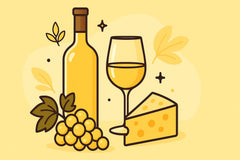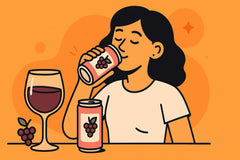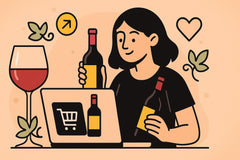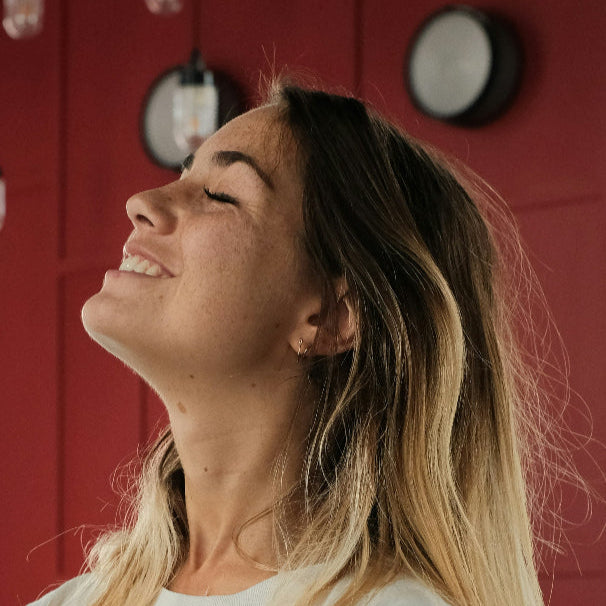Wine is one of those things that feels both timeless and intimidating. It’s been around for thousands of years, yet somehow still manages to make even the most confident among us feel like we’re fumbling through a secret society of swirling glasses and cryptic tasting notes. But here’s the thing: wine tasting isn’t about being fancy or knowing obscure French vineyard names. It’s about paying attention. It’s about slowing down, using your senses, and letting a drink tell you a story.
Whether you’re someone who’s only ever grabbed a bottle based on the label art (no shame in that), or you’re the kind of person who wants to know what “tannic” actually means, this guide is for you. We’re going to break down the basics of wine tasting in a way that’s actually useful—and maybe even a little fun. By the end, you’ll know how to taste wine like a pro, talk about it without sounding like a snob, and maybe even impress your friends at your next dinner party.
What Wine Tasting Actually Is
Wine tasting is the practice of using your senses—sight, smell, taste, and even touch—to evaluate and appreciate wine. It’s not just about drinking; it’s about noticing. When you taste wine, you’re not just sipping alcohol—you’re exploring layers of flavor, texture, and aroma that come from the grape variety, the soil it was grown in, the weather that year, and how it was aged.
The difference between drinking and tasting wine is kind of like the difference between hearing music in the background and sitting down with headphones to really listen. Drinking is casual. Tasting is intentional. And while professional sommeliers might spit their wine into a silver cup and wax poetic about “forest floor” notes, casual wine tasting is more about curiosity than performance.
Historically, wine tasting has deep roots in European culture, especially in France and Italy, where wine is woven into daily life. But it’s not just an old-world tradition anymore. Today, wine tasting is a global pastime, from Napa Valley to New Zealand. Whether you’re at a vineyard, a wine bar, or your own kitchen table, the principles are the same.
The Five Basic Steps of Wine Tasting (The 5 S’s)
There’s a simple framework used by wine professionals and enthusiasts alike to evaluate wine: the 5 S’s—See, Swirl, Sniff, Sip, and Savor. Each step helps you unlock a different aspect of the wine’s personality. Think of it like getting to know someone new: you notice how they look, how they carry themselves, how they smell (hopefully good), how they speak, and how they leave you feeling.
See – Evaluating the Color and Clarity
First things first: look at your wine. Hold your glass up to the light or against a white background. What color is it? A pale straw yellow? Deep ruby red? Orange-tinged rosé?
Color can tell you a lot. White wines get darker with age, while red wines tend to fade. A young red might be vibrant and purple, while an older one leans brick-red. Clarity also matters—cloudy wine isn’t always bad, but it might signal something unfiltered or even flawed.
Swirl – Releasing Aromas
Swirling your wine isn’t just for show. It helps oxygen mix with the wine, releasing volatile compounds that carry aroma. You don’t need to go full tornado—just a gentle motion will do.
If you’re nervous about spilling, try swirling with the glass on a flat surface. It’s not about flair; it’s about function.
Sniff – Smelling the Bouquet
Stick your nose in the glass and take a deep inhale. What do you smell? Fruit? Flowers? Earth? Spice? This is where wine gets poetic—and sometimes weird. You might catch hints of blackberry, wet stone, or even leather.
Aromas in wine are typically grouped into categories:
- Primary aromas: From the grape itself—fruits, herbs, floral notes.
- Secondary aromas: From fermentation—yeasty, buttery, nutty.
- Tertiary aromas: From aging—tobacco, vanilla, dried fruit, oak.
Don’t worry if you can’t name every scent. Just notice what comes to mind. Your brain is better at this than you think.
Sip – Tasting and Evaluating Flavor
Now, finally, take a sip. Let it coat your tongue. Move it around your mouth. What do you notice?
There are a few key elements to pay attention to:
- Sweetness: Is it dry or sweet?
- Acidity: Does it make your mouth water?
- Tannins: Do you feel a drying sensation on your gums?
- Body: Is it light like skim milk or heavy like cream?
- Finish: How long do the flavors linger after you swallow?
Each of these gives you clues about the wine’s structure and balance.
Savor – Reflecting on the Experience
After you swallow (or spit, if you’re tasting a lot), take a moment. What’s left in your mouth? Is it pleasant? Complex? Flat?
This is a good time to jot down notes. You don’t need to write a novel—just a few words about what you liked or didn’t. Over time, these notes help you understand your preferences.
Understanding Wine Terminology
Wine has its own language, and it can feel like a secret code. But once you crack it, it’s actually pretty useful. Here are some common terms you’ll hear:
- Tannins: Compounds from grape skins and seeds that create a drying sensation. More common in red wines.
- Body: The weight or fullness of the wine in your mouth.
- Legs: The streaks that form on the inside of the glass after swirling. They don’t mean much—just alcohol and sugar content.
- Finish: The aftertaste. A long finish is usually a good thing.
- Vintage: The year the grapes were harvested. Weather that year can impact flavor.
The trick is to use these terms to describe your experience, not to impress anyone. If you’re ever unsure, Wine Folly is a great resource for decoding wine speak.
Types of Wine and Their Characteristics
Not all wines are created equal. Here’s a quick breakdown of the main types and what you can expect from each.
Red Wines
Made with dark-skinned grapes, red wines tend to be fuller-bodied and more tannic.
- Cabernet Sauvignon: Bold, dark fruit, high tannins. Great with steak.
- Merlot: Softer, plum and cherry notes. Easy-drinking.
- Pinot Noir: Light-bodied, earthy, red fruit. Pairs well with salmon or mushrooms.
White Wines
Made with green or yellow grapes, white wines are usually lighter and more acidic.
- Chardonnay: Can be buttery and oaky or crisp and citrusy.
- Sauvignon Blanc: Zesty, grassy, tropical fruit. Great with goat cheese.
- Riesling: Often sweet, but not always. High acidity and floral notes.
Rosé Wines
Made by letting red grape skins touch the juice for a short time. Light, fruity, and perfect for summer.
Sparkling Wines
Fizzy and festive. Includes Champagne (from France), Prosecco (Italy), and Cava (Spain).
Dessert and Fortified Wines
Sweeter wines often served after a meal. Includes Port, Sherry, and Ice Wine.
How to Set Up a Wine Tasting at Home
You don’t need a vineyard or a sommelier to host a wine tasting. Here’s what you’ll need:
- Wine glasses (one per person per wine, if possible)
- A selection of wines (3–5 is a good number)
- Palate cleansers like plain crackers or bread
- Water for rinsing and hydrating
- Notepads or tasting sheets
Arrange the wines in a logical order: start with lighter whites, move to heavier whites, then lighter reds, and finish with bold reds or sweet wines. Serve them at the right temperature—whites chilled, reds slightly below room temp.
Keep it casual. Play music. Encourage conversation. The goal isn’t to judge the wine—it’s to enjoy it and learn something new.
Common Mistakes Beginners Make
Everyone starts somewhere, and mistakes are part of the process. Here are a few to watch out for:
- Drinking too fast: Tasting is about pacing yourself.
- Overwhelming your palate: Too many wines at once can blur the flavors.
- Using the wrong glassware: A proper wine glass helps concentrate aromas.
- Ignoring temperature: Serving wine too warm or too cold can dull its character.
- Feeling intimidated: You don’t need to know everything. Ask questions. Be curious.
Tips to Improve Your Wine Tasting Skills
Like anything, wine tasting gets better with practice. Here’s how to level up:
- Try new wines regularly. Explore different regions and styles.
- Keep a wine journal. Note what you liked and didn’t.
- Attend tastings at local wine shops or vineyards.
- Use apps like Vivino to track your favorites and read reviews.
Wine Etiquette and Best Practices
A few small habits can make you look like you know what you’re doing:
- Hold your glass by the stem to avoid warming the wine.
- In tasting rooms, don’t wear strong perfume—it interferes with aromas.
- At restaurants or shops, don’t be afraid to ask for recommendations. Staff are usually happy to help.
Why Wine Tasting Is Worth the Effort
Wine tasting isn’t about being fancy. It’s about paying attention to what you enjoy. It’s about slowing down, being present, and letting your senses guide you. Whether you’re sipping a $10 bottle from the grocery store or something rare and expensive, the experience is yours to define.
So take your time. Try new things. Trust your palate. And remember: the best wine is the one you like.
Share Your First Tasting Experience
Tried your first wine tasting? We’d love to hear about it. Drop a comment below and tell us what you discovered. And if you want more tips, reviews, and beginner-friendly wine content, subscribe to the blog or follow us on social media.







